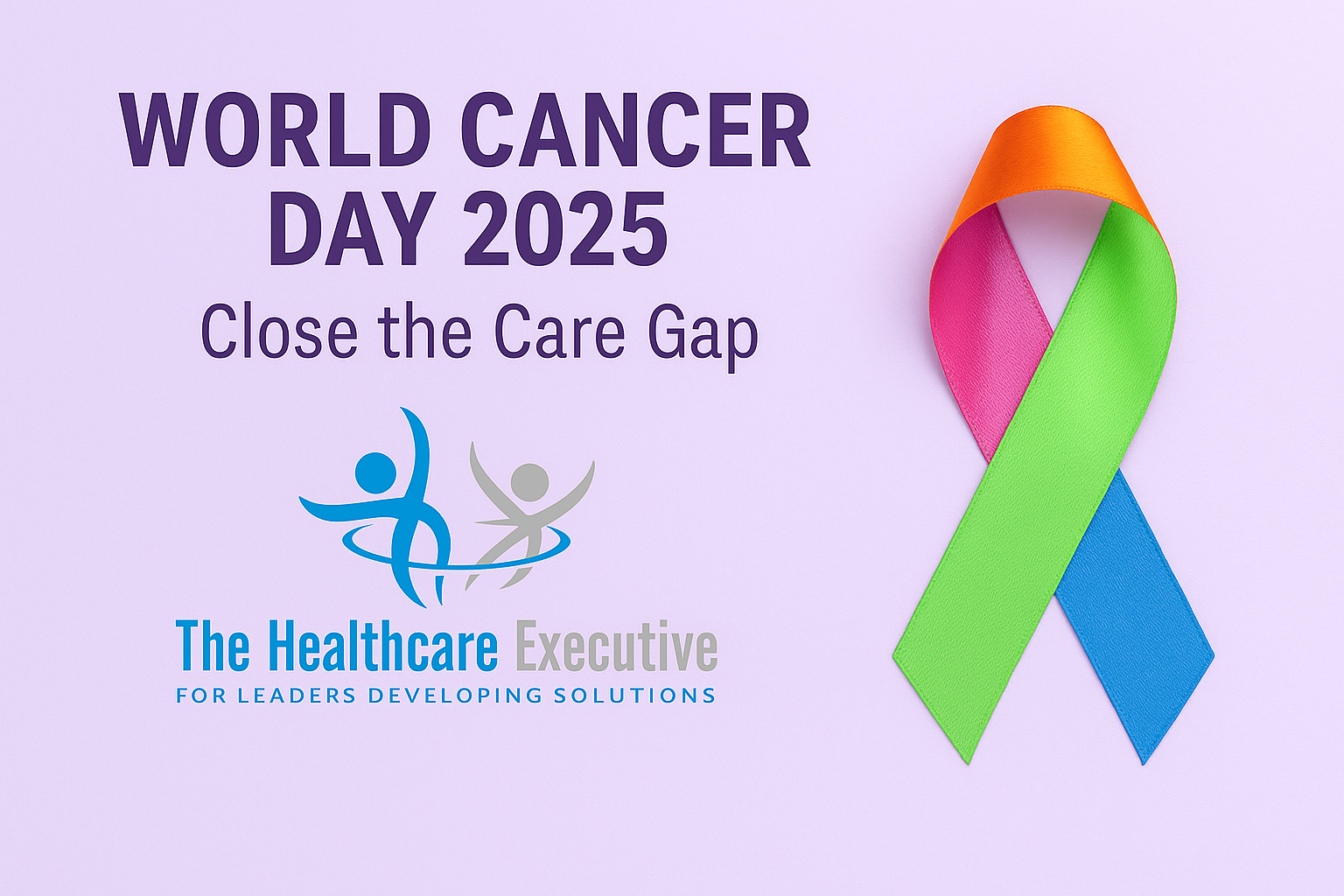World Cancer Day 2025: Close the Care Gap

- Posted by Greg Wahlstrom, MBA, HCM
- Posted in Health Observance Calendar
Empowering Healthcare Leaders to Drive Equity, Access, and Innovation
Published: February 4, 2025
Observed globally every February 4, World Cancer Day is a collective call to close the care gap and ensure that everyone, everywhere, has access to life-saving cancer treatment and support. This year’s theme challenges healthcare leaders to confront systemic inequities that limit early detection, diagnosis, and treatment—particularly among low-income, rural, and marginalized communities. According to the Union for International Cancer Control (UICC), over 10 million people die from cancer each year—many from preventable or treatable forms. Health system executives must address disparities by integrating screening into primary care, expanding mobile oncology services, and redesigning care pathways for cultural competence and accessibility. Institutions like MD Anderson Cancer Center have pioneered navigation programs that reduce time to diagnosis and improve outcomes across populations. True leadership in cancer care requires data-informed strategy and patient-informed practice. World Cancer Day is not just about awareness—it’s about action.
Healthcare executives must prioritize equity in all aspects of cancer care—from screening and diagnostics to survivorship programs. Partnerships with community health centers, local advocacy organizations, and faith-based coalitions are vital for reaching historically underserved populations. Investment in translation services, community health workers, and tele-oncology platforms creates opportunities to improve access without overburdening infrastructure. Cancer doesn’t wait, and neither should health systems. The National Cancer Institute’s Cancer Centers Program offers guidance on creating regional hubs of excellence through public-private collaboration. Executive oversight should include review of racial and socioeconomic disparities in treatment timelines, outcomes, and patient satisfaction. By embedding health equity into quality metrics, organizations can lead from the front in the fight against cancer.
Innovation in cancer care is accelerating—and health system leaders must ensure their organizations are ready to adopt new tools without leaving patients behind. Breakthroughs in genomic testing, personalized medicine, and AI-assisted diagnostics promise earlier and more targeted treatment, but access remains unequal. Executives must weigh both clinical and ethical implications when scaling precision oncology platforms. Programs like those at Dana-Farber Cancer Institute show how real-time data can enhance outcomes when embedded within multidisciplinary teams. Workforce development must include education on new technologies, risk stratification, and equity-centered implementation models. Reimbursement alignment, tech literacy programs, and inclusive clinical trial design all require executive leadership. Innovation without equity risks reinforcing the very gaps we seek to close.
World Cancer Day 2025 is a moment for leaders to reaffirm their role in transforming oncology from episodic intervention to lifelong equity. Executives can use this observance to review gaps in access, launch new partnerships, and publicly commit to accountability in cancer care. Clear, inclusive communication from leadership helps destigmatize screening and builds trust with patients and communities. By investing in navigation, survivorship services, and culturally tailored care models, hospitals can drive better outcomes at scale. Cancer is a crisis that demands courage, strategy, and follow-through. Executive leadership must be at the center of this movement—not just responding to inequities, but proactively dismantling them. Closing the care gap begins with those who control the systems behind the scenes.
Explore how your leadership team can expand access, embrace innovation, and embed equity into every phase of cancer care. Our latest strategies offer a blueprint for driving meaningful impact beyond World Cancer Day.
Discover More
For insights on transforming healthcare leadership to rebuild public trust, read our executive brief on system-wide transparency and equity.
Internal Links
- Rebuilding Trust in U.S. Healthcare: A Leadership Blueprint
- Health System Mergers: What’s Next in 2025?



